Art & Exhibitions
Visiting Yayoi Kusama’s Sprawling New 70-Year Survey Is Like Stepping Inside a Frenzied Tik-Tok Feed… in a Good Way
The Japanese artist is having her largest-ever retrospective in Europe at the Gropius Bau in Berlin.
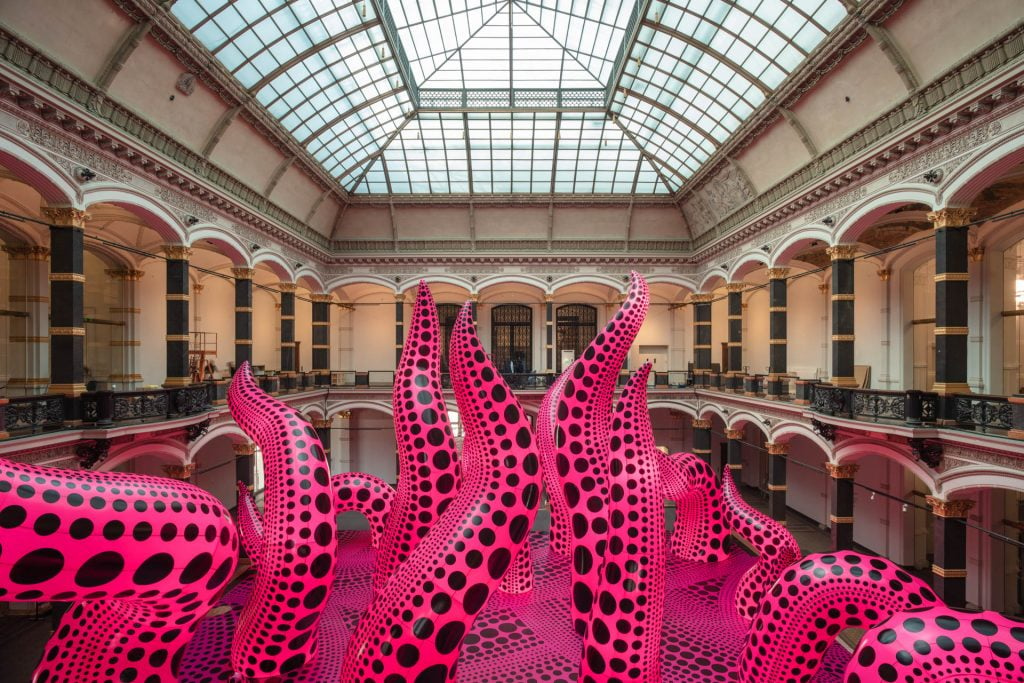
The Japanese artist is having her largest-ever retrospective in Europe at the Gropius Bau in Berlin.

Kate Brown

There are only a handful of living artists as well known as Yayoi Kusama. The 92-year-old’s colorful hair and stern gaze in photos is as recognizable as her mirrored funhouses and spot-covered installations, which have made her one of the most in-demand artists in the world.
But a major new retrospective at Gropius Bau in Berlin looks beyond that span of famous work. “A Bouquet of Love I Saw in the Universe,” which opened today (but will temporarily close again due to a new lockdown), has recreated eight exhibitions that mark less-recognized turning points in the Japanese artist’s career.
The indexical approach sheds light on the enduring complexities that hide in plain sight in Kusama’s obsessively painted and warping world. Though pleasurable for all the senses, a plunge into Kusama’s work offers little reprieve from the anxieties and shifting realities outside. Each decade of her oeuvre is packed with frantic energy and emotion. Boundaries are crossed, one’s psychological stamina is tested. There is a sort of endlessness to each installation that creates a frenzy of seeing as chaotic and constant as a TikTok feed.
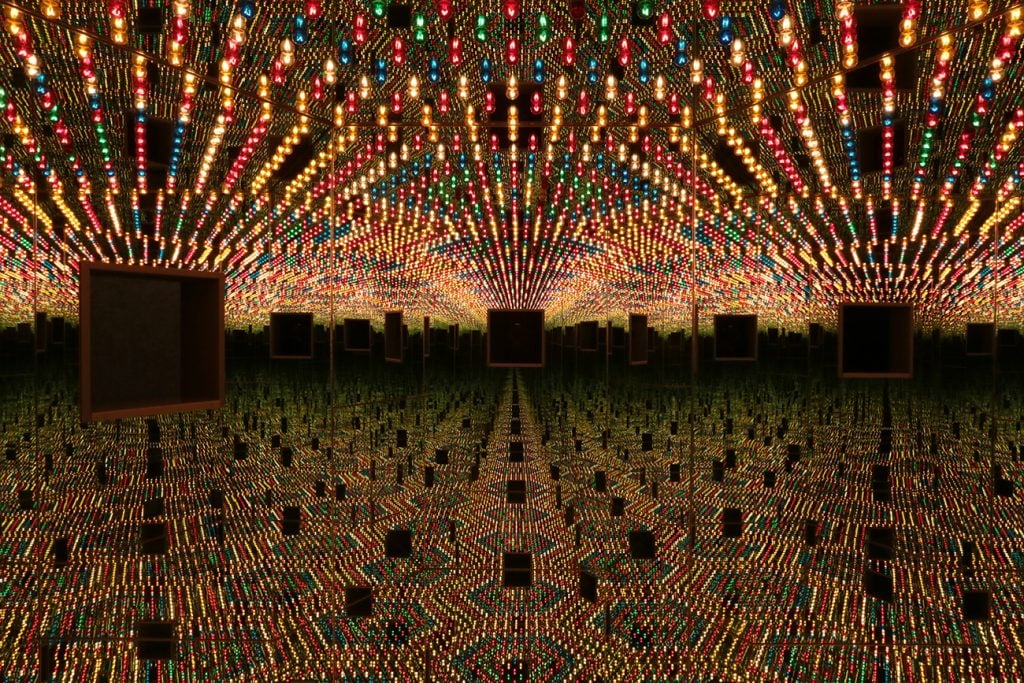
Yayoi Kusama, Infinity Mirror Room — Love Forever (1966/94). Courtesy: Ota Fine Arts.
The exhibition spans Kusama’s 70-year career, starting chronologically with her childhood in Matsumoto, Japan, where she had her first shows. Earlier pieces, many from the artist’s own collection, ring with a similar intensity to later works, but young Kusama was more somber. A lonely pair of trees is swallowed up by an ominous landscape in the 1950 painting Accumulation of the Corpses (Prisoner of Depersonalization).
Revelations about abusive episodes from her childhood filter in a restaged version of her 1963 show “Aggregation: One Thousand Boats,” which was originally held at the Gertrude Stein Gallery in New York. The row boat, dressed up with Kusama’s signature stuffed phalli, touches on the artist’s self-described “fear of sex” that resulted from watching her father’s affairs at the behest of her mother. It is a disturbing story that importantly complicates the crazed landscapes of bulging sculptures that appear in the following rooms.
There was a frenzy of touch in her 1960s and ’70s happenings, and her recreated exhibition “Love Room,” originally shown in The Hague in 1967, exemplifies Kusama’s utopian visions of blending boundaries between herself, others, nature, and the universe. She paints dots on naked visitors who move around the room in a recording from the opening.
“I felt as if I had begun to self-obliterate, to revolve in the infinity of endless time and the absoluteness of space, and be reduced to nothingness,” Kusama once said.
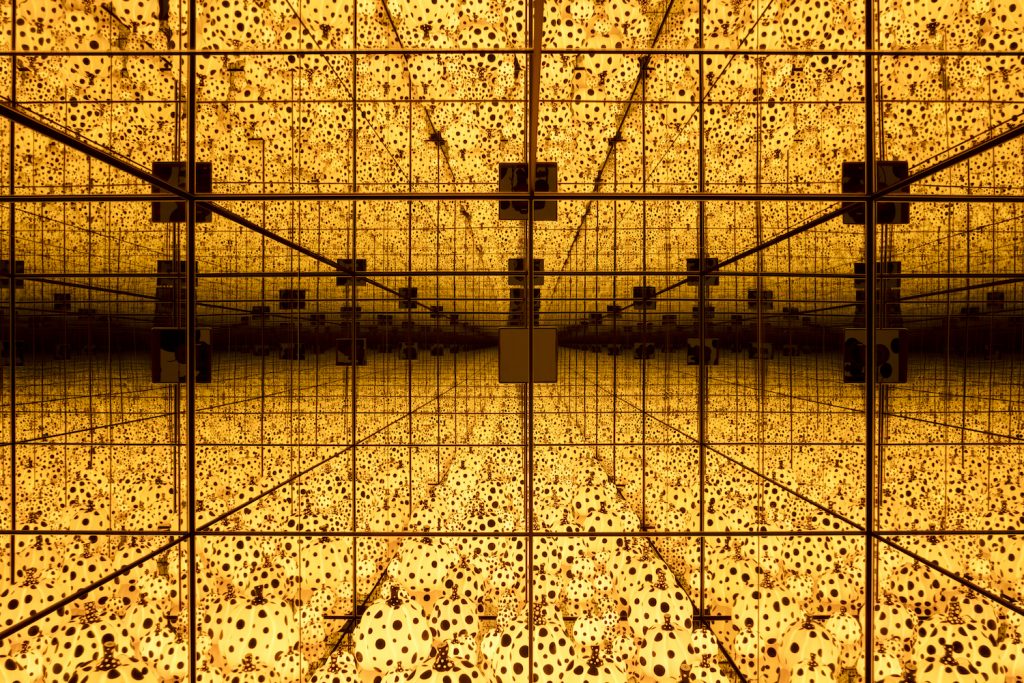
“Yayoi Kusama: A Retrospective,” installation view, 2021, Gropius Bau. Photo: Luca Girardini.
On the wave of that 1970s mood, the artist returned home to Japan but found the hippie revolution would not rise up there in quite the same way, the exhibition panels explain. With the jubilance of the times somewhat subsided, the artist leans into the prevailing anti-war politics that marked the post-Vietnam war era. In Japan in 1977, she made a series of work that cast an unrelenting look at the horrors of war, collaged paintings with mixed photos from Vietnam and World War II. That same year, Kusama committed herself to a psychiatric facility, where she still lives and works today.
Of course, there’s a healthy dose of early and late Infinity rooms, the ultimate Kusama crowd-pleasers that, thanks to sensitive curating, are given an intellectual rigor. The artist’s first room, from her show “Peep Show or Endless Love,” in New York in 1966, features two small boxy “holes” that you can stick your head into, while someone else pushes their own face through another hole across the way. Together, socially distanced at the Gropius Bau, you can stare at each other, and into a never-ending optical illusion at the same time.
It struck me all as a bit of a pharmakon. While Kusama offers a dazzling escape from mundanity, the feelings of the world are turned on and tuned up when you step inside it. Decades later, the artist still seems to know our own vices better than we do.
“Yayoi Kusama: A Bouquet of Love I Saw in the Universe” is on view at the Gropius Bau, Niederkirchnerstraße 7, Berlin, April 23–August 15.

Yayoi Kusama: A Retrospective, Installation view, 2021, Gropius Bau Photo: Luca Girardini
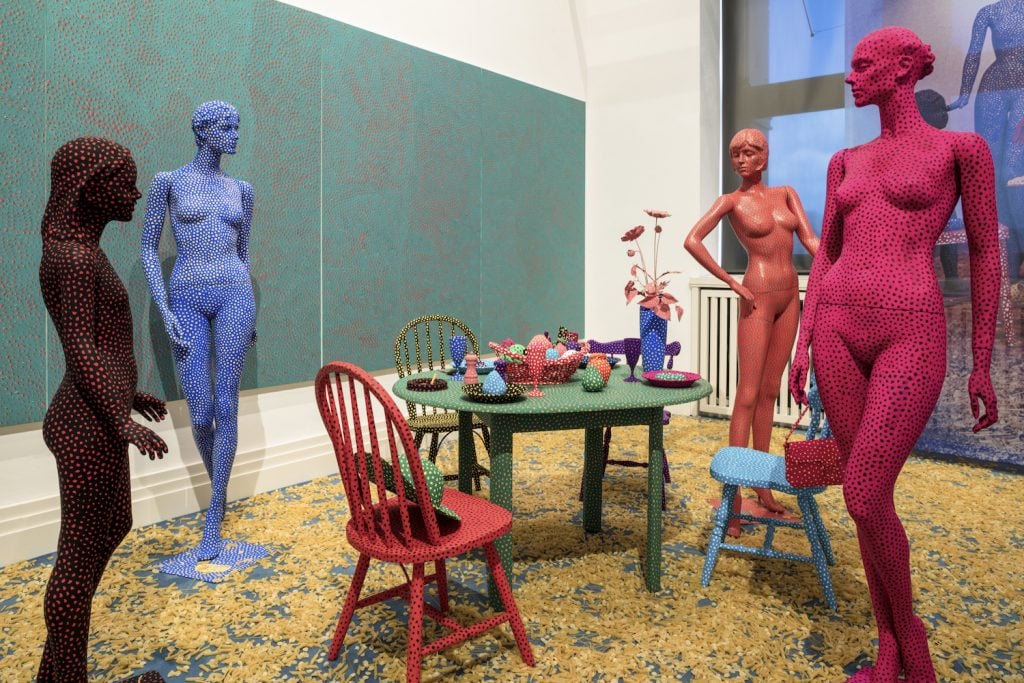
“Yayoi Kusama: A Retrospective,” installation view, 2021, Gropius Bau. Photo: Luca Girardini.
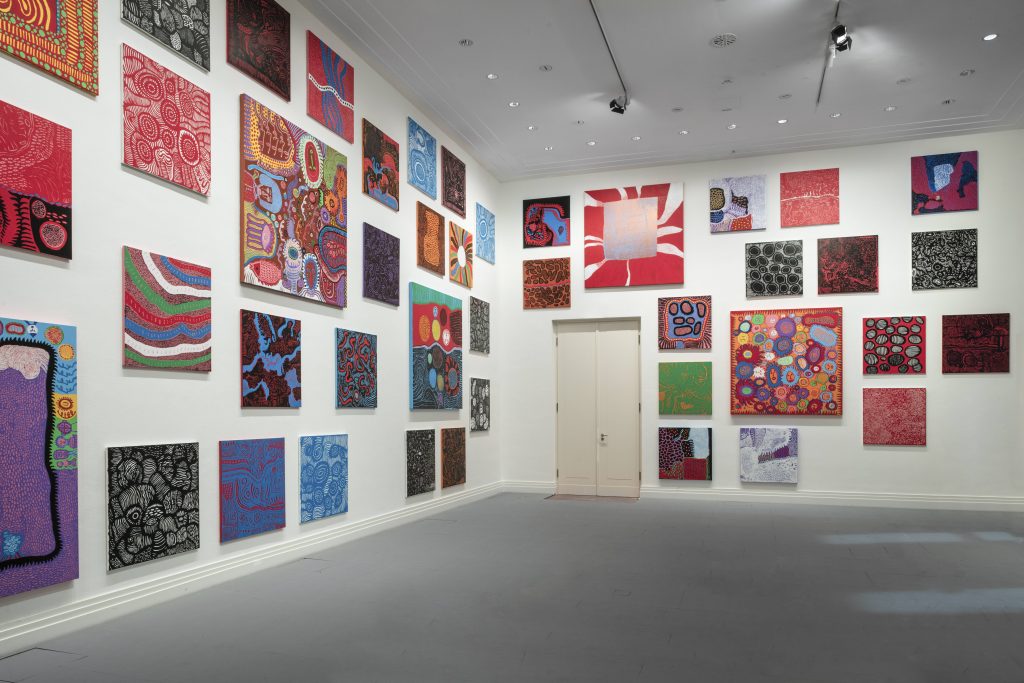
“Yayoi Kusama: A Retrospective,” installation view, 2021, Gropius Bau. Photo: Luca Girardini.
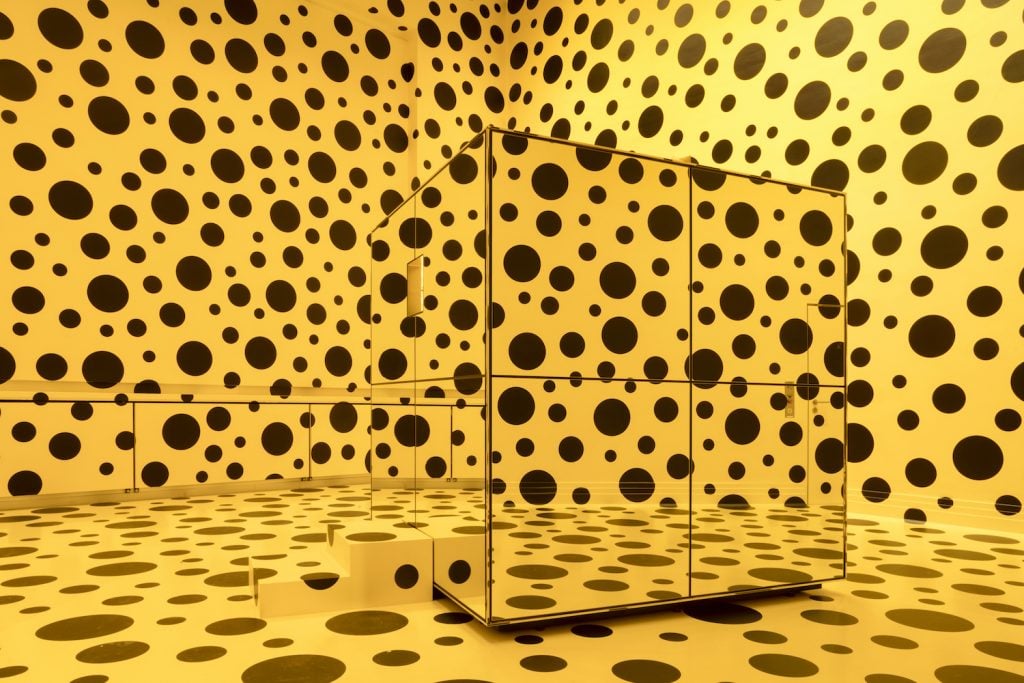
“Yayoi Kusama: A Retrospective,” installation view, 2021, Gropius Bau. Photo: Luca Girardini.
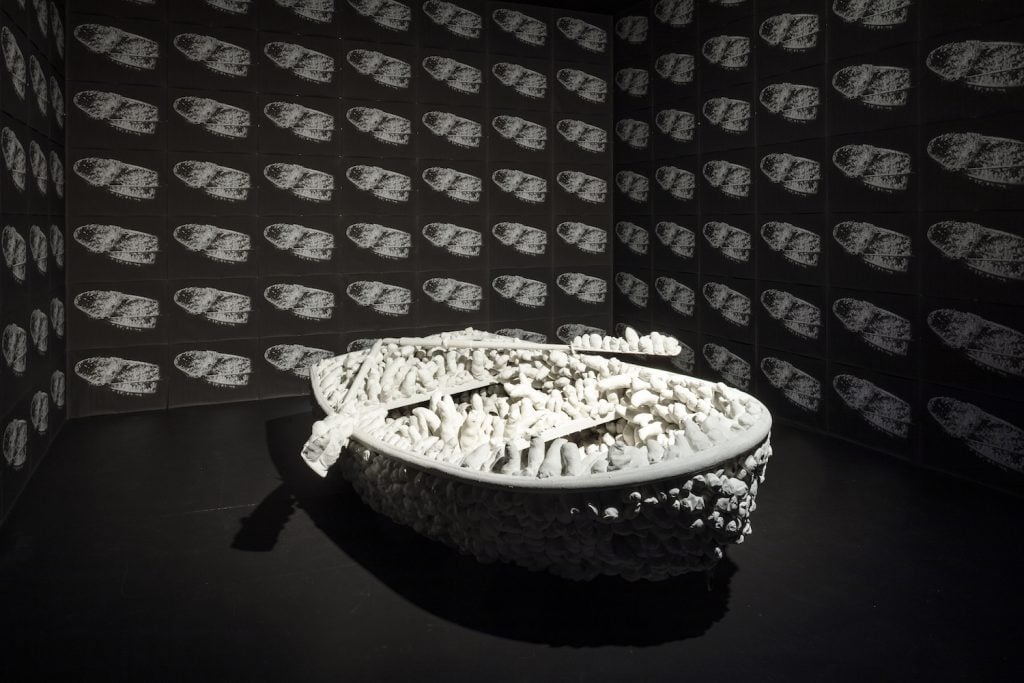
“Yayoi Kusama: A Retrospective,” installation view, 2021, Gropius Bau. Photo: Luca Girardini.
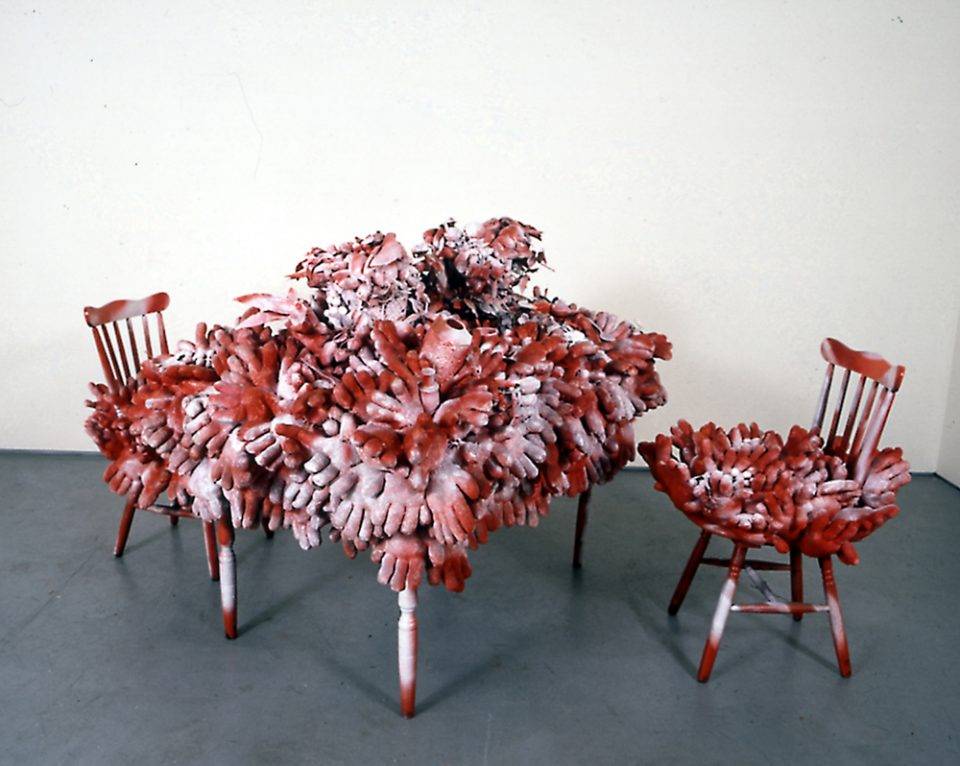
Yayoi Kusama, The End of Summer (1980). Courtesy: Sammlung Goetz, Munich.
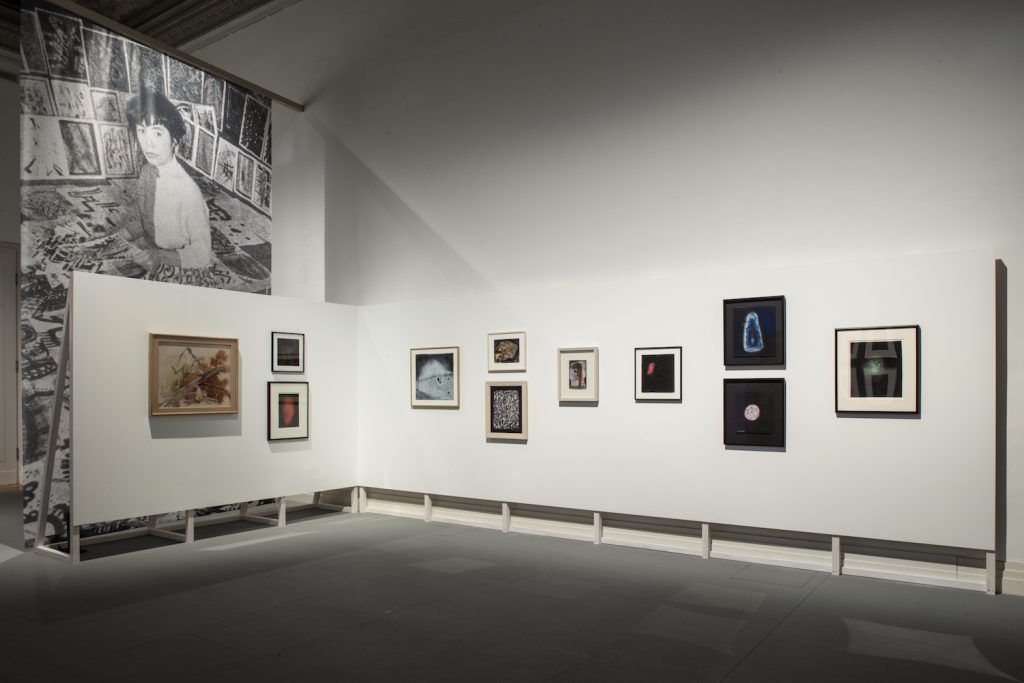
“Yayoi Kusama: A Retrospective,” installation view, 2021, Gropius Bau. Photo: Luca Girardini.
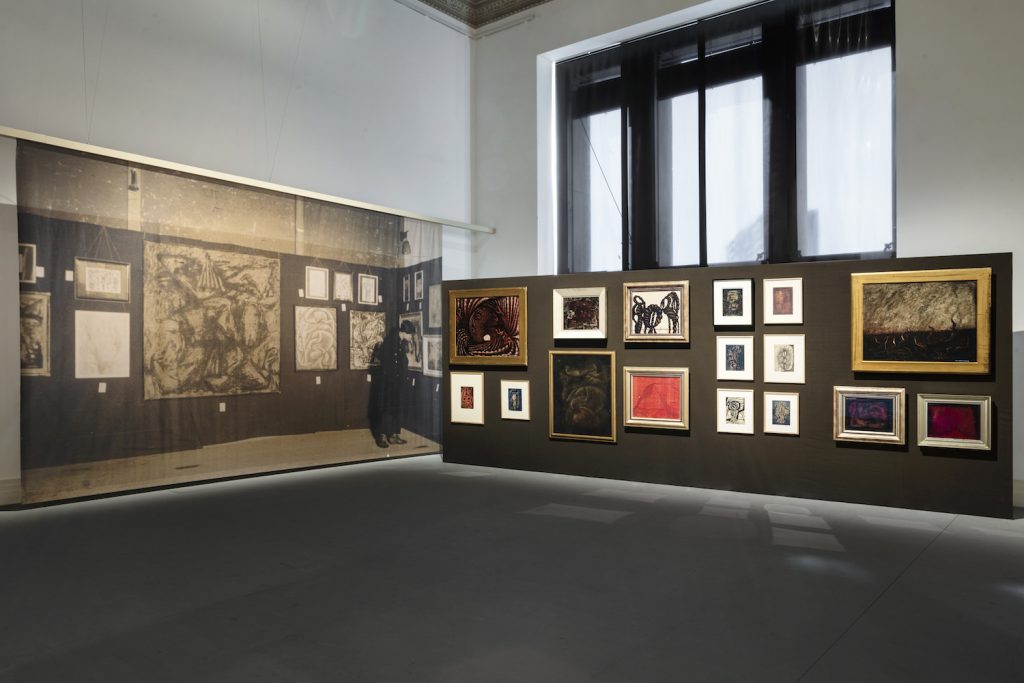
“Yayoi Kusama: A Retrospective,” installation view, 2021, Gropius Bau. Photo: Luca Girardini.
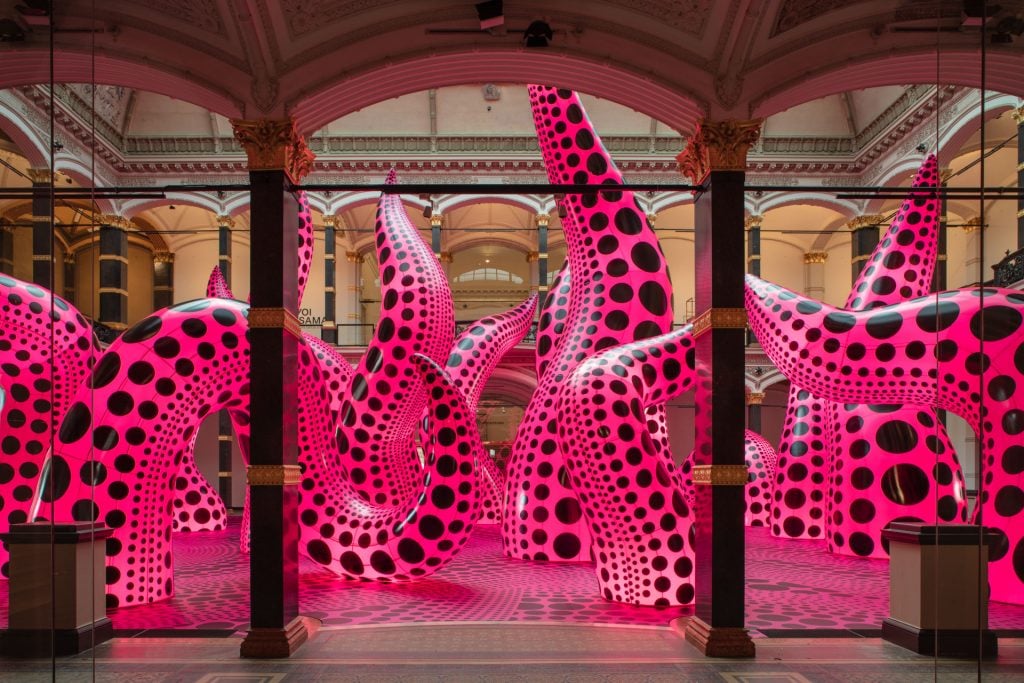
“Yayoi Kusama: A Retrospective,” installation view, 2021, Gropius Bau. Photo: Luca Girardini.